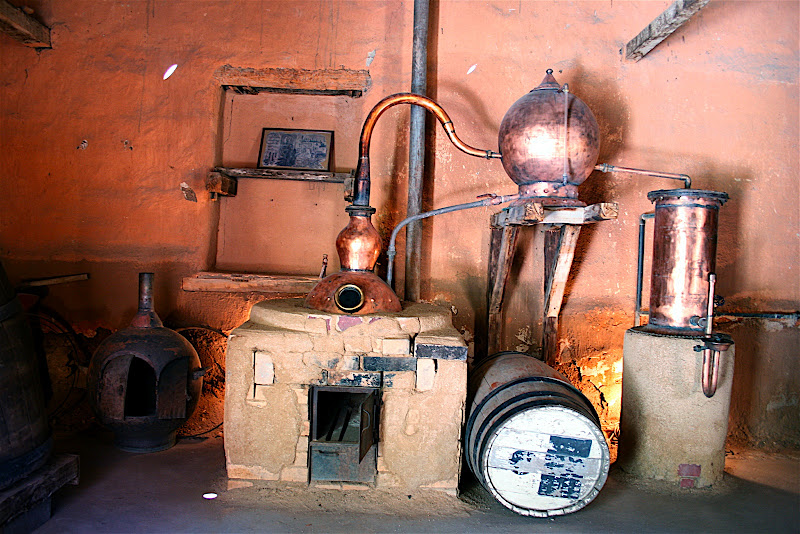
Pisco
The steep walls of The Valle de Elqui stretch west from La Serena until the Andes Mountains. The dry conditions lead to cloudless and hot summer days, but at night the cold marine-air will flow in from the coast. These are the ideal conditions for growing white grapes for the production of pisco.

Unlike Italian Grappa, Pisco is a hard liquor distilled from fresh grapes, not wine. For this reason, the distillery for Pisco Mistral lies far toward the end of the Elqui Valley, surrounded by its vineyards.

Once picked, deseeded, and juiced, the grape-liquid goes through a short fermentation process, so as to create a base for distillation.

Though this is an older example, the wine-base is then distilled in copper stills. Throughout the process, three types of alcohol are created in order: la cabeza, el corazón, and la cola. The first and last are toxic, but el corazón is produced into pisco.

The alcohol is then aged in American Oak barrels. Higher grades of Pisco will be stored for for a much longer period, while those types more characteristic of Pisco Sours, the national drink of both Chile and Peru, go through a much briefer aging process.
During the tasting, our guide watched and waited as we had to sip two healthy shots (one of this latter type (not typically taken neat)). Pisco types are classified by alcohol content (ranging from 30 to 46 percent), and some are considered to have a taste resembling bourbon.

No comments:
Post a Comment
lemme know